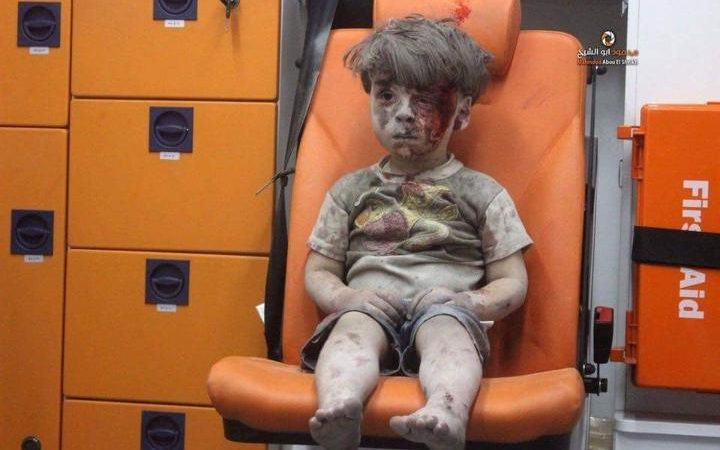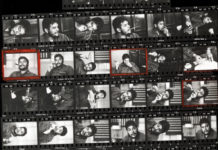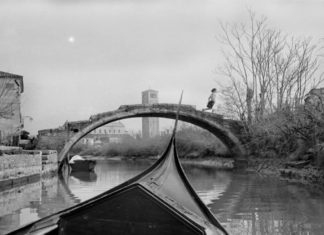From time to time when I read about Street Photography, or during discussions with other photographers I get to hear that Street Photographers exploit people on the street by taking pictures without asking first. This opinion raises some valid questions including the ethics in photojournalism, but also shows the double standards that we follow in the media. Photojournalism also often faces the same critique and therefore I want to answer the question “What are the ethics of Photojournalism?”.
Photojournalism Definition
Let’s describe what Photojournalism is for a second. The purpose of Street Photography or Photojournalism is to capture candid moments of reality. One principle is to never alter a scene or to influence it unnaturally because that would violate the ethics of photojournalism. Ideally, we as photographers want to be invisible spectators that can document the world as if we wouldn’t be there. For the sake of these candid moments, we don’t ask for permission beforehand, because this would mean that we won’t be able to photograph the reality. Of course, we could simply give the instruction that the subjects should behave like they wouldn’t be photographed. But I guess everyone knows that people act differently when they know that they are being photographed.
It’s a thin line between getting close enough to create the images we want to present from an artistic point of view and not interfering with the scene. In Street Photography this means that we are often very “low-key” with our equipment. We carry a big DSLR to shoot on the street rarely, but use cameras that every tourist carries around. This gives us the freedom to go very unnoticed and taking pictures that are natural and sincere.
Social Documentary Photography is a more difficult case. Usually, it follows a more long-term project and that means that there is a lot more preparation going on involving every party to ensure the ethics of photojournalism. The subjects know that are being photographed and are part of the story. In order to still get candid images, the photographer has to work the group for a very long time. Usually, months on no end until he is just a normal part of the social group and not some outsider. This is the work that goes into the project to tell a candid story.
Ethics of Photojournalism
Definition:
Journalism is the production and distribution of reports on the interaction of events, facts, ideas, and people that are the “news of the day” and that informs society to at least some degree
Street Photography in its broad forms is not really a subcategory of Journalism. Although a lot of images have historical value in showing the life of a certain time, it is not really dedicated to “inform” society. At its highest form Street Photography has mostly artistic value in documenting the human nature in its natural environment. It is not necessarily to tell informative stories or to research mankind in a deep fashion, but scraps on the surface of the people. Names, background and their story don’t matter in Street Photography since we don’t interact with our subject or get in contact with them.
On the other hand, Documentary Photography gets closer to people in the way, that it is all about the story they tell. The purpose of this genre is to show informative stories through a series of images, mostly accompanied by written text. One of the key factors of Social Documentary Photography is honesty and trust. Today’s media is in a very confusing state with accusations of faked news spreading the world and it’s not really clear what is true and what is altered. There lies a chance for Documentary Photography to simply show unaltered images and built trust.
Manipulated Images in Photojournalism
Unfortunately, Photojournalism had its fair share of “scandals” during the last year as well. One of the most known photographers Steve McCurry staged some of his photos, wrote accompanying text that didn’t state the truth or used photoshop to tinker the images.
Read the full reveal here: Three Dimensions of Photojournalism and its ethics
Those revelations are hurting the credibility of Photojournalism in times when it would be the chance to trump as independent journalism sources.
Nonetheless, the majority of stories isn’t opinion driven but seeks to tell the truth, although we have to understand that the first person perspective can never be 100% objective it should be the target to share facts rather than personal beliefs.
What are the Responsibilities of Photojournalism
As human beings, Photojournalists should follow the same ethics as everyone else. From my perspective, this means to do everything reasonably possible to help people in direct suffering. As of the nature of Photojournalism, this leads to a lot of discrepancies since the characteristics of documentary photography means that photographers find themselves more often than not in areas of conflict that challenge the ethics of photojournalism.
Let’s discuss this dilemma with the help of the following controversial picture.

The image shows a suffering girl, obviously malnourished and observed by a symbol of death – the vulture. Clearly, this is a powerful image shot by Kevin Carter in 1993 in Sudan depicting the struggle of the United Nations to provide aid against the famine.
Struggling with his own depression Carter took his life a few months later, provoking the rumors that he couldn’t live with the feeling of guilt of documenting these human tragedies without being able to solve the problems.
If this picture would be posted online in any discussion forum, there would be a lot of voices that would support this claim of “how could he take a picture of this situation without providing any sort of help?”. The same arguments could be heard during the migration crisis in Europe or the conflict zones in the Middle East.
In my opinion, this shows the dilemma of the photojournalism ethics. On the one hand, this kind of people seeks out dangerous situations where they document people that obviously need help, on the other hand, it is impossible for a single photographer to reach out to all these persons.
So what is the actual solution to this conflict? Shouldn’t Photojournalism exist anymore and human suffering not be documented anymore? Instead, we should all sit in our comforting homes and turn a blind eye to critical areas of the world, while we are in a perfectly safe environment?
The Power of Photojournalism
What is often forgot during these discussions is the power, these images can provide and how they can translate emotions into actions. In the more recent news, the picture showing a boy that barely survived the hell that Aleppo is to this very day, made the public aware of the living conditions of more than 100 thousand citizens that still live in this area.

Did this image had a significant influence and improve the situation living conditions in Aleppo? This is a question that is not answerable with certainty. Maybe the future will have a more differentiated view on such events and the influence of pictures.
But what it provides is awareness and pressure on politicians to actually provide aid. Not publishing those images and “censoring” every image of human suffering wouldn’t mean that the world is suddenly a better place. It would just have the effect that we wouldn’t have to look at these images anymore and slowly they would vanish from the public eye. Without these haunting pictures and news, there wouldn’t even the slightest responsibility for those that are capable to provide any help. In the end, if you don’t have to watch – it doesn’t exist, right?
The Afghan Girl photographed by Steve McCurry (Yes, despite his photoshopped images he also had some real impactful images) is one of the most famous images of the 21st century and an excellent example of photojournalism.

In the legacy of the image the “Afghan Children’s Fund” has been found and raised more than 1 Million US-Dollar to this day.
Photographers do their best to help and their tool is the camera to raise public awareness more than anything else. I understand that it is hard to look at those images, but we shouldn’t criticize the people that spread the message, but rather focus on the roots of the problems and do the best we can to our personal abilities.
Street Photography and Social Tendencies
Mixing Social Documentary Photography with Street Photography unfortunately mostly leads to very uninspiring photos of homeless people. Often shot from far away without any connection to the subject. Now a very justified question is if these photos are a form of exploitation?
Beggars, panhandler or homeless people – you name it – are part of the street. A part that is often frowned upon to show and criticized because society doesn’t want to look at them. As Street Photography should document the life on the street truthfully, it would only distort the reality if homeless people wouldn’t be represented in modern Street Photography. Therefore, it is not exploitation to include them.
But there is some misconception in today’s Street Photography that simply an image of a homeless person will do it and represent modern wealth inequality or whatever they are trying to say with such images. The truth is, that 99% of those so-called Street Photography images of beggars are shit and don’t hold any value. As already mentioned, they are often shot from far away with a telelens because the photographer was afraid to get close and actually form a connection to the person. They also provide no context other than the person being on the ground and in addition to that they are often photographed from above, increasing the disconnection and boredom these pictures induce.
What is Photojournalism and its Task?
Photojournalism and Street Photography have the duty to simply show reality. Any deliberate distortion by the Photographer that doesn’t fulfill this requirement disqualifies the images as Documentary ones.
Photojournalists aren’t responsible for the suffering of the people they photograph, they are simply the messenger that document life. Don’t shoot the messenger for transporting the reality, but ask yourself what you can do to change the situation if you feel so strongly about images showing suffering. Photojournalists have risked their lives throughout the history of photojournalism to spread the message and raise awareness that actually can have a bigger impact, than helping an individual.
Of course, landscape pictures have their own appeal and colorful flowers can be calming. But reality can be rough and it is important to show it to the world.
There is no exploitation in showing reality, whether you like to look at it or simply close your eyes and pretend that the world is a fluffy place. The difference lies in good or bad pictures that either make a difference or don’t.
Stay Curious
Sebastian Jacobitz




























